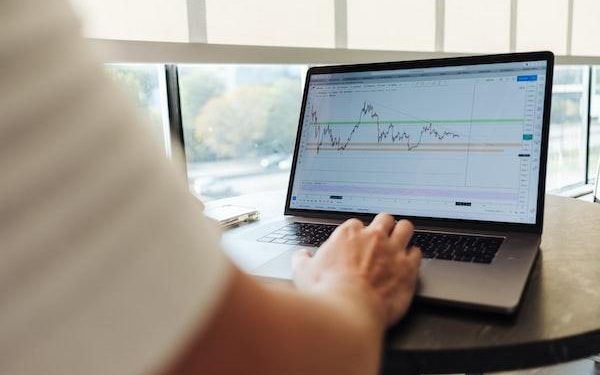When it comes to tracking price movements for shares and stocks, there are few charts that can compare to the Kagi chart. Today, we’ll explore this type of chart, how to use it to identify trend reversals, and the many other benefits of Kagi charts. Keep reading to learn more about using Kagi charts.
Understanding the Kagi Chart
A Kagi chart is a type of technical analysis chart that’s used to indicate price movement and trend. It’s similar to a candlestick chart, but instead of using wicks to represent the high and low prices of the day, it uses lines that extend from the body of the candle to indicate the price range.
The Kagi chart is used to indicate trend, support and resistance levels, and buy and sell signals. The lines on the chart are typically green for up trends and red for downtrends. When the price reaches the top or bottom of the candle, the line will change color. A buy signal is indicated when the price breaks above the previous high, and a sell signal is indicated when the price breaks below the previous low.
The Kagi chart is a bit more difficult to read than a candlestick chart, but it can be a remarkably effective tool for predicting price movement.
How To Identify Trend Reversals Using a Kagi Chart
A Kagi chart can be used to determine when a trend has reversed by looking for a change in the direction of the lines. When the lines start moving in the opposite direction, it indicates that the trend has reversed and a new trend is in place.
As we’ve mentioned, a Kagi chart is composed of a series of vertical lines connected by horizontal lines. The lines are drawn on a price chart and represent the price movement of a security. The leftmost line on a Kagi chart is the starting point and the rightmost line is the ending point. The topmost line is the highest point and the bottommost line is the lowest point. The horizontal lines represent the time period and the vertical lines represent the price movement.
When a trend is in place, the price will move in a certain direction and create a series of peaks and valleys. These peaks and valleys will be represented by lines on the chart. For example, as an upward trend continues, the price will move higher and the lines on the chart will move to the top. If the trend reverses, the price will move lower and the line on the chart will create a horizontal peak before reversing downward.
The Benefits of Using Kagi Charts for Technical Analysis

As with any other form of technical analysis, there are benefits to using a Kagi chart when trading stocks or other financial instruments. One of the biggest advantages is that Kagi charts are exceedingly simple to use, making them a good choice for novice traders. In addition, Kagi charts can also identify support and resistance levels, which can help you set proper stop-loss and take-profit levels.
Another reason a Kagi chart is a valuable tool for traders is because it can help them measure the strength of a trend and to determine when a trend is weakening or ending. The chart can also be used to spot buying and selling opportunities. Another advantage of a Kagi chart is that it’s less affected by price fluctuations than traditional candlestick charts. This makes it a more reliable tool for identifying trend reversals and price breakouts. It can also be used to identify overbought and oversold conditions.
A Kagi chart is a valuable tool for traders that provides a wide range of benefits when it comes to technical analysis.
Analyzing the Market With a Kagi Chart
Kagi charts are an effective, simple technical analysis tool that can benefit both novice and experienced traders. Identifying trend reversals is easier for traders using Kagi charts as they only need to look for a change in the direction of the lines in the chart. Not to mention the many other benefits these charts provide. So, consider conducting your technical analysis with a Kagi chart.


